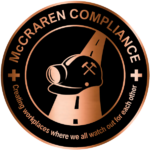First published by Safety+Health an NSC publication.
Washington — Five Senate Democrats are imploring the Mine Safety and Health Administration to lower its exposure limit for crystalline silica – a carcinogen found in sand, stone and artificial stone.
In a letter dated Nov. 20 and addressed to MSHA administrator David Zatezalo, Sens. Joe Manchin (WV), Sherrod Brown (OH), Bob Casey (PA), Tim Kaine (VA) and Mark Warner (VA) write that the findings of a recent Department of Labor Office of Inspector General report contending MSHA’s silica exposure limit is out of date “illustrates the need for urgent action.”
The agency’s silica exposure limit of 100 micrograms per cubic meter of air was established in 1969. Although OSHA has since lowered its silica exposure limit to 50 micrograms per cubic meter, “both OSHA and NIOSH warned that 50 μg/m³ is the lowest feasible limit, not the safest,” DOL OIG states in the report released Nov. 16.
Further, DOL OIG says a recent increase in progressive massive fibrosis – the most severe form of black lung disease – has been linked to “high-volume mechanized mining of decreasing deposits of coal, which releases more silica dust.” According to the report, more than three times as many coal miners were identified as having black lung disease from 2010 to 2014 compared with 1995 to 1999.
“Our nation’s coal miners have done their jobs, working tirelessly to help win wars, power the nation and keep the lights on,” the senators write. “It’s time for MSHA to do its job and update its regulations to ensure our coal miners have a safe working environment.”
In a Nov. 23 press release, United Mine Workers of America President Cecil Roberts called the DOL OIG report “right on the money,” adding that it supports UMWA’s long-standing position calling for a lower legal limit for silica.
“It is long past time for MSHA to fulfill its responsibilities and act to protect miners from silicosis or progressive massive fibrosis (PMF),” Roberts said. “MSHA knows what measures it must take in order to ensure safe and healthy work environments for the nation’s miners and it has known it for years. The agency has a responsibility to enact those measures.”
DOL OIG recommends that MSHA establish a separate standard to allow the agency to issue citations and monetary penalties for silica exposure limit violations. Additionally, it advises MSHA to increase the frequency of inspector samples “where needed” to enhance its sampling program. One example is by implementing a risk-based approach.
In a response to DOL OIG dated Oct. 27, Zatezalo wrote that his agency does not agree with the recommendations of lowering the silica exposure limit or penalizing operators solely for exposure violations. He added that MSHA plans to issue a proposed rule on exposure to respirable quartz – one of the most common types of respirable crystalline silica.
Zatezalo said MSHA will study DOL OIG’s final recommendation, including the risk-based approach, to see if sampling needs to increase under certain mining conditions.
McCraren Compliance assists employers in protecting their workers, starting with a comprehensive Work-site Analysis, Hazard Prevention, Controls, and Safety & Health Training.



